Enjoy a Relaxing Tour of Eastern Hokkaido’s Three Famous Lakes in
One Day!
A Trip Report on Sightseeing Bus “Pirika-go” Covering Lake Mashu, Lake Kussharo, and Lake Akan
A Trip Report on Sightseeing Bus “Pirika-go” Covering Lake Mashu, Lake Kussharo, and Lake Akan
Publication Date:2025.06.27
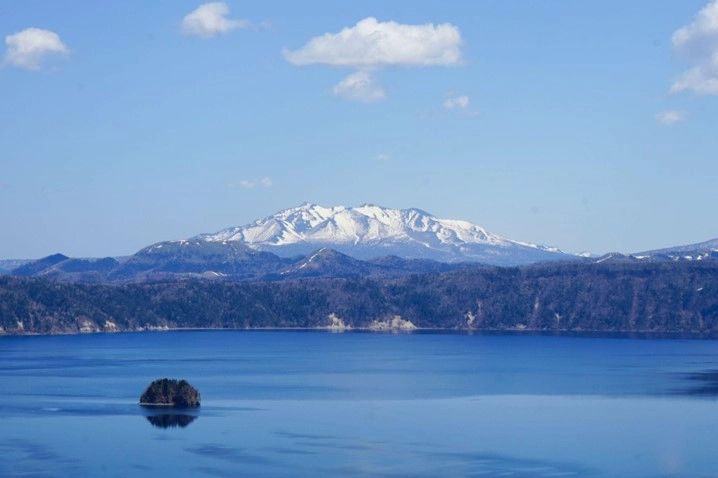
Contents
- 01 Overview
- 02 8:00 Board the Bus & Depart
- 03 10:00 Lake Mashu First Observatory (Stop: 30 minutes)
- 04 10:30 Mt. Iou (Stop: 30 minutes)
- 05 11:00 Lake Kussharo Sunayu (Stop: 20 minutes)
- 06 13:00 Lake Akan Onsen (Stop: 120 minutes)
- 07 16:00 Return to Kushiro Airport / Kushiro City
- 08 Operator Interview
- 09 How to Reserve
- 10 Summary
01
Overview

In Eastern Hokkaido, known as the Doto area, you’ll find
untouched natural landscapes and mysterious lakes spread across
the region. Many of these locations can be challenging to access
on your own, but the guided sightseeing bus “Pirika-go” makes it
easy to explore efficiently and in depth. Pirika-go is a popular
one-day sightseeing bus tour departing from and returning to
Kushiro, allowing you to visit the three great lakes of Eastern
Hokkaido—Lake Mashu, Lake Kussharo, and Lake Akan—all in a
single day. The tour also covers some of the region’s most
iconic scenic and experiential spots, such as Mt. Iou and
Sunayu, so you can fully enjoy Eastern Hokkaido while listening
to informative commentary from the bus guide.
02
8:00 Board the Bus & Depart
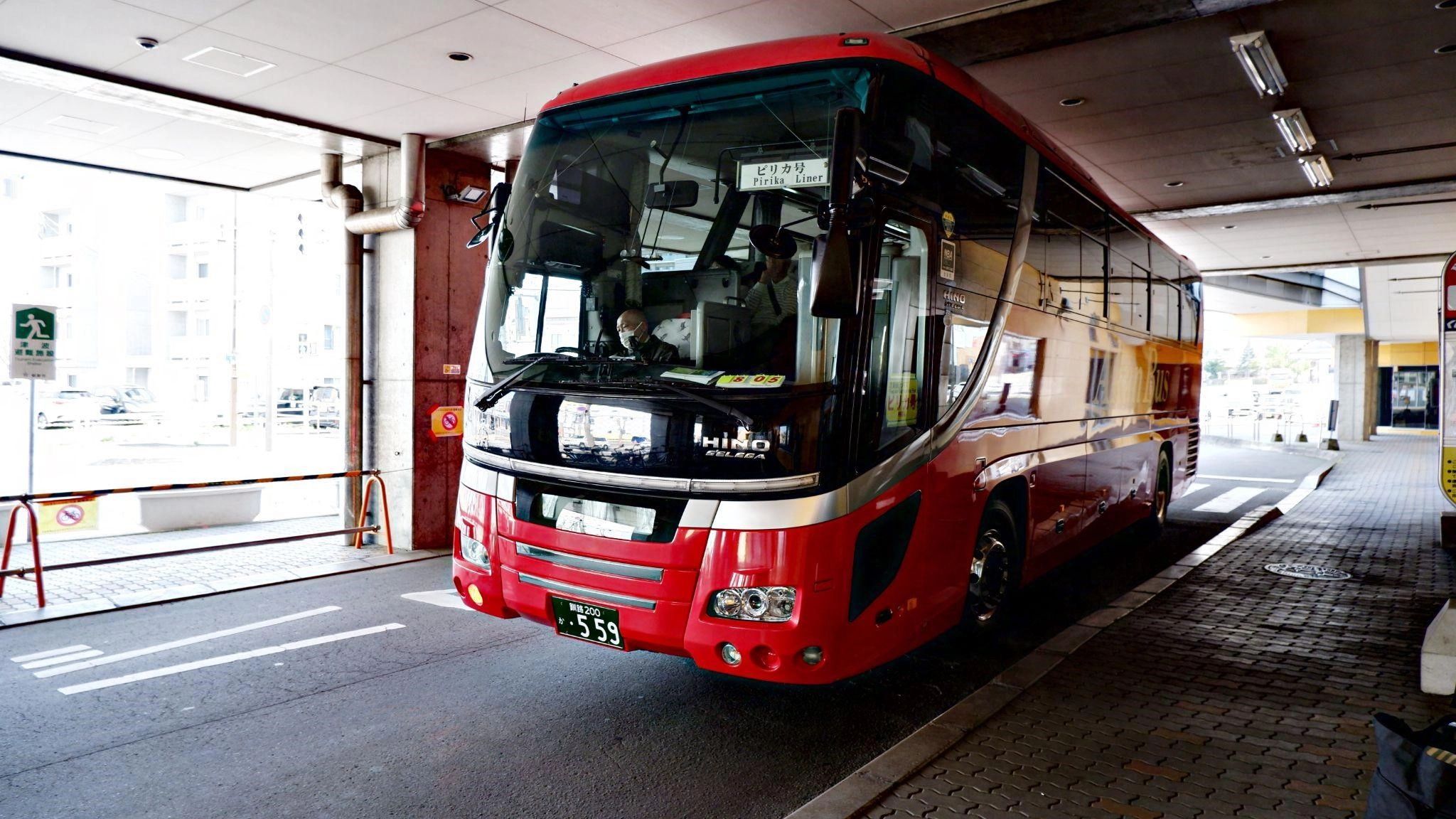
The Pirika-go bus tour departs at 8:00 am from central Kushiro,
with convenient pick-up points near major hotels and
landmarks—perfect for travelers staying overnight in the
city:
① In front of Kushiro Station Bus Terminal [Departs at 8:00]
② Fisherman’s Wharf MOO [Departs at 8:05]
③ Kushiro Prince Hotel [Departs at 8:08]
On board, seating is open and arranged four across in each row, allowing you to enjoy not only your destinations but also the stunning scenery that unfolds outside your window. In particular, as you pass near the Hokuto Observatory, you’ll be treated to expansive views of the wetlands from the bus. On a clear morning, you may even witness the Kushiro Wetlands wrapped in a magical layer of mist. While traveling between sightseeing spots, you can enjoy live commentary from the experienced bus guide. The guide will not only point out the flora and fauna visible from the window, but will also share fascinating insights into the history of each town and the culture of the Ainu people. As a unique experience only available on this tour, you may get to hear traditional folk songs that have been passed down through generations. And when Ezo deer or Hokkaido red foxes are spotted along the way, the bus will slow down to ensure you get the perfect photo opportunity!
① In front of Kushiro Station Bus Terminal [Departs at 8:00]
② Fisherman’s Wharf MOO [Departs at 8:05]
③ Kushiro Prince Hotel [Departs at 8:08]
On board, seating is open and arranged four across in each row, allowing you to enjoy not only your destinations but also the stunning scenery that unfolds outside your window. In particular, as you pass near the Hokuto Observatory, you’ll be treated to expansive views of the wetlands from the bus. On a clear morning, you may even witness the Kushiro Wetlands wrapped in a magical layer of mist. While traveling between sightseeing spots, you can enjoy live commentary from the experienced bus guide. The guide will not only point out the flora and fauna visible from the window, but will also share fascinating insights into the history of each town and the culture of the Ainu people. As a unique experience only available on this tour, you may get to hear traditional folk songs that have been passed down through generations. And when Ezo deer or Hokkaido red foxes are spotted along the way, the bus will slow down to ensure you get the perfect photo opportunity!
03
10:00 Lake Mashu First Observatory (Stop: 30 minutes)
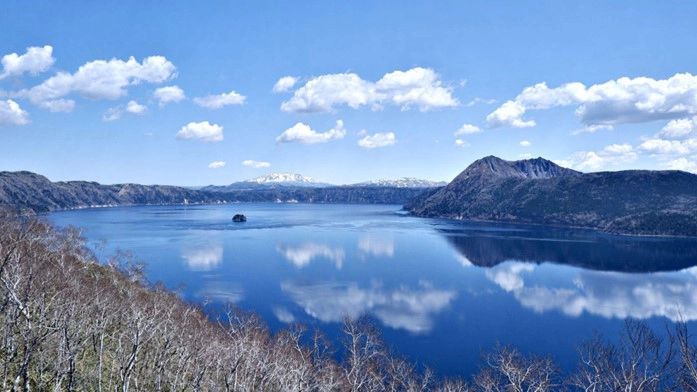
The first destination is the Lake Mashu First Observatory, which
offers sweeping views of the breathtaking lake. Known as “Kamuy”
(Lake of the Gods) in the Ainu language, Lake Mashu is a
volcanic caldera lake renowned for being one of the clearest
lakes in the world. From the observatory at about 350 meters
above sea level, you’ll be mesmerized by the panoramic view of
the lake and the majestic mountains beyond—a scene straight out
of a painting. On clear days, you may even see all the way to
Mt. Shari on the opposite shore. The color and mood of the lake
often change depending on the season and time of day, adding to
its allure. Lake Mashu is also famously known as “the foggy
lake,” so if you happen to visit on a clear day, consider
yourself very lucky! On those rare occasions, the vivid,
mystical “Mashu Blue” of the lake’s surface will truly captivate
you. On this particular day, even the bus guide was amazed by
the calm winds and the dreamlike reflection of clouds on the
lake’s surface. At the Mashu Lake Kamuy Terrace, which was
renovated and reopened in 2022, you can relax on a bench and
soak in the grandeur of nature at your leisure. As the first
major stop, it’s a place where you can genuinely experience the
overwhelming scale and beauty of Eastern Hokkaido’s landscape.
There’s a 30-minute stop here, allowing you time to explore
freely. At the shop on the first floor, you can find exclusive
souvenirs and try local treats such as the Mashu Blue Soft Serve
or Mashu Mist Soft Serve—refreshing ramune-flavored ice cream
inspired by the lake’s signature color, a hit among visitors.
Another recommended snack is the Hokkaido classic,
sweet-and-salty “imo dango” (potato dumplings), perfect for a
taste of the local flavor!
04
10:30 Mt. Iou (Stop: 30 minutes)
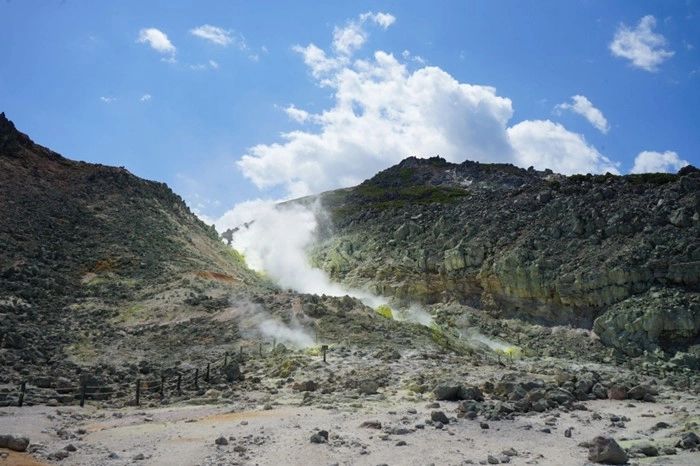
The next stop is Mt. Iou, an active volcano known in the Ainu
language as “Atosanupuri,” meaning “naked mountain.” As you
approach, you’ll see the mountainside billowing with white steam
and hear a powerful roaring sound. Upon arrival, the air is
filled with the distinct scent of sulfur, and jets of steam rise
from the ground all around—offering a rare, up-close experience
of the earth’s energy. Walking across the stony gravel from the
parking area toward the base of the mountain, you can observe
the steam vents at close range. Hot springs gushing from the
rocky surface and vivid yellow sulfur crystals create a truly
dynamic scene. The 30-minute stop here will fly by as you
explore this otherworldly landscape.
At the “Iouzan Mokumoku Base,” a new tourism hub opened in 2023, you can relax at the café and shop for sweets and souvenirs made with local ingredients. A must-try item is the hot spring eggs, steamed right in the natural spring—every year, some 200,000 visitors pick up these popular treats. The flavor is subtly infused with the aroma of sulfur and has a wonderfully warm, comforting taste. Another local favorite is the “Iouzan On-Tama Soft,” a unique dessert that tops a cup of rich soft-serve ice cream and hot spring egg with a drizzle of caramel sauce. This limited-menu item, exclusive to Mt. Iou, tastes just like caramel pudding and is not to be missed.
At the “Iouzan Mokumoku Base,” a new tourism hub opened in 2023, you can relax at the café and shop for sweets and souvenirs made with local ingredients. A must-try item is the hot spring eggs, steamed right in the natural spring—every year, some 200,000 visitors pick up these popular treats. The flavor is subtly infused with the aroma of sulfur and has a wonderfully warm, comforting taste. Another local favorite is the “Iouzan On-Tama Soft,” a unique dessert that tops a cup of rich soft-serve ice cream and hot spring egg with a drizzle of caramel sauce. This limited-menu item, exclusive to Mt. Iou, tastes just like caramel pudding and is not to be missed.
05
11:00 Lake Kussharo Sunayu (Stop: 20 minutes)
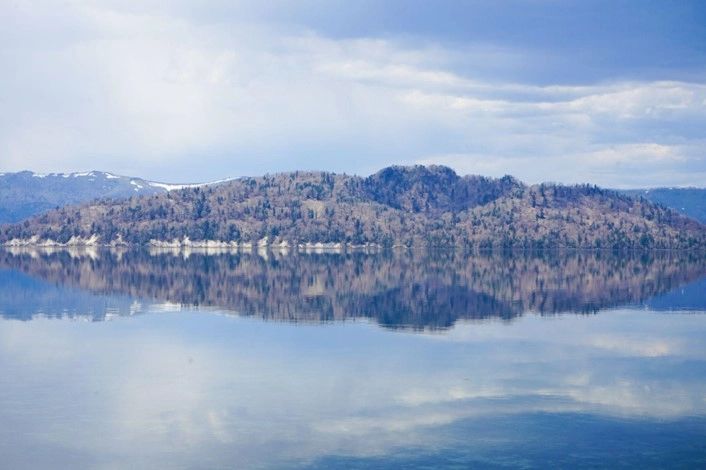
Next, you’ll visit Lake Kussharo, Japan’s largest caldera lake.
Formed by volcanic activity, this beautiful lake is surrounded
by numerous natural hot springs along its shores. On this rare
windless day, the surface of the water reflected the surrounding
mountains like a perfect mirror, creating a breathtaking scene.
One of the most popular attractions by the lakeshore is Sunayu,
a unique spot where you can dig into the sandy beach to find
warm hot spring water bubbling up just below the surface.
Creating your own private footbath or sand bath is a truly
memorable experience. The lakeside is also equipped with walking
paths and benches, making it a perfect place for a relaxing
stroll or simply to sit and enjoy the tranquil atmosphere.
During the winter months, you may even spot graceful swans up
close as they fly in and rest on the lake. At the local shop,
you’ll find a variety of light meals, regional sweets, and
souvenirs. Take some time to enjoy the local delicacies or
search for a special memento of your trip. For those seeking a
little adventure, you can also rent a boat and explore the
vastness of Lake Kussharo from the water, surrounded by majestic
mountains reflected on the lake’s surface—a spectacular sight!
This is a true healing spot where you can connect with nature
and refresh your spirit. On the way back to the bus, you might
even encounter a wild Ezo red fox. Although their fluffy and
adorable appearance might tempt you to feed them, it’s very
important not to do so. Feeding wild animals can disrupt their
natural habits and upset the ecosystem balance. When observing
wildlife in Eastern Hokkaido, always keep a respectful distance.
06
13:00 Lake Akan Onsen (Stop: 120 minutes)
The final destination of the tour is Lake Akan Onsen, located at
the heart of Akan-Mashu National Park. Here, you’ll have a
generous 120 minutes of free time to explore at your own pace.
Lake Akan Onsen is a lively area where Ainu culture, hot
springs, and pristine nature coexist, offering plenty of
attractions for every visitor. Lake Akan itself stretches across
the center of the area and was formed by volcanic activity
roughly 150,000 years ago, creating a dramatic caldera lake.
Surrounded by deep forests, the lake’s surface beautifully
mirrors the trees on calm days. Lake Akan is also famous as the
natural habitat of “marimo”—rare, spherical green algae
designated as a Special Natural Monument of Japan. These
charming, rolling “moss balls” are a true wonder of nature and
can only be found in a handful of places worldwide.
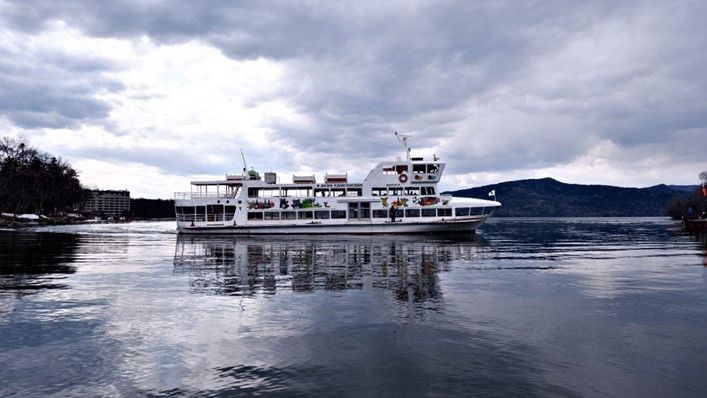
Be sure to visit “Akan Ainu Kotan,” just a 10-minute walk from
the bus stop. Meaning “village” in the Ainu language, this
unique settlement is home to around 120 Ainu people and offers
visitors a chance to experience the rich traditions of their
culture. The streets are lined with shops specializing in
traditional wood carvings and Ainu crafts—perfect for those
looking for a distinctive Hokkaido souvenir. At the “Akan Lake
Ainu Theater Ikoro,” Japan’s first theater dedicated to Ainu
dance, you can watch performances of traditional Ainu dances,
which are listed as UNESCO Intangible Cultural Heritage. This
remarkable area lets you experience the harmony of indigenous
culture and natural beauty, making Lake Akan Onsen a memorable
highlight of your Eastern Hokkaido journey.
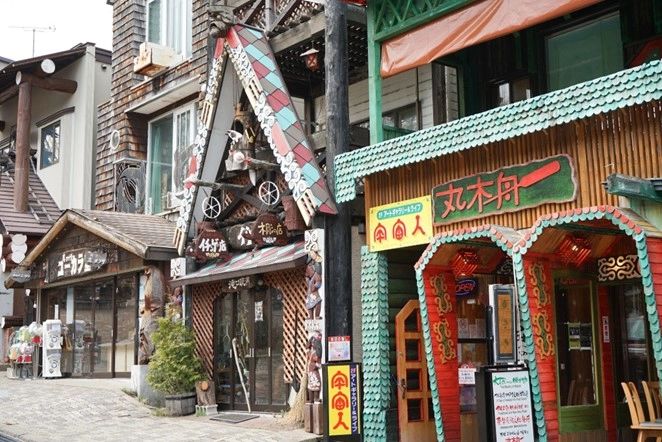
The onsen town is home to a variety of restaurants featuring
local ingredients, as well as eateries where you can savor
authentic Ainu cuisine. Treat yourself to a leisurely late lunch
at your favorite spot—you’re sure to find something special. On
this day, we sampled the unique “lake lobster” (a type of edible
crayfish farmed in Lake Akan) carbonara and venison meat sauce
pasta. Both are rare delicacies you can only taste here.
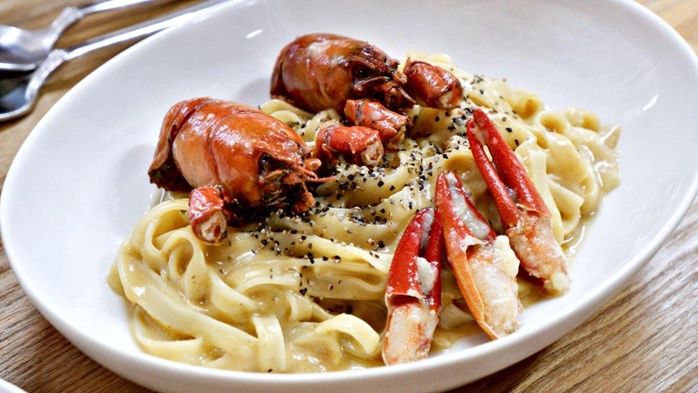
Of course, no visit would be complete without enjoying the hot
springs. There are several day-use onsen facilities, as well as
hand and foot baths—perfect for relaxing and soothing away
travel fatigue. Another highlight is the ever-popular Lake Akan
sightseeing cruise. Board the boat and visit Churui Island,
located in the middle of the lake, where you can explore the
Marimo Exhibition and Observation Center dedicated to these
fascinating algae. Don’t miss out on “marimo yokan,” a local
specialty sweet inspired by the marimo, which has become a
classic Lake Akan souvenir. A word of caution: if you board the
sightseeing boat during the Pirika-go tour, you may not make it
back in time for the bus departure. But here’s a helpful tip for
those who absolutely don’t want to miss the cruise! Before
arriving at Lake Akan Onsen, the bus guide will make an
announcement—simply let them know if you wish to disembark at
Lake Akan Onsen. By presenting your Pirika-go ticket (Kushiro
departure—Kushiro or Kushiro Airport arrival), you can take the
local bus heading back to Kushiro City at 16:15 free of
charge.
With its perfect blend of sightseeing, hands-on experiences, and gourmet delights, Lake Akan Onsen is the ideal spot to end your journey on a high note!
With its perfect blend of sightseeing, hands-on experiences, and gourmet delights, Lake Akan Onsen is the ideal spot to end your journey on a high note!
Lake Akan Sightseeing Cruise
07
16:00 Return to Kushiro Airport / Kushiro City
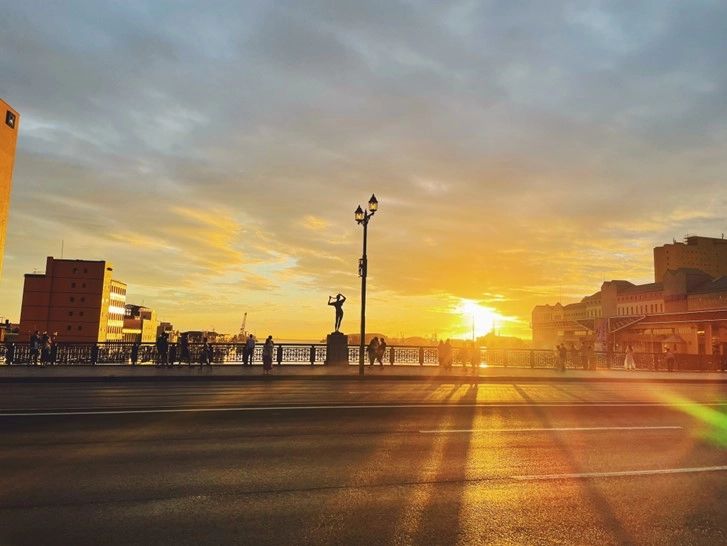
After your free time at Lake Akan Onsen, the bus departs once
again for Kushiro. On the return journey, your guide will share
highlights from the day as well as additional sightseeing
information, letting you savor the memories of your trip right
up to the end. Enjoy a relaxed ride back to Kushiro as you
reflect on all the breathtaking scenery you’ve witnessed
throughout the day. Just like on the outbound trip, there are
three convenient drop-off locations in central Kushiro, and you
can also choose to get off at Tancho Kushiro Airport—ideal for
those heading straight to their next destination.
① Tancho Kushiro Airport【Arrive at 16:10】
② Kushiro Station Bus Terminal【Arrive at 16:50】
③ MOO Bus Terminal【Arrive at 16:54】
④ Kushiro Prince Hotel【Arrive at 16:55】
If you’re catching a flight, simply get off at the airport for a smooth and timely transfer. Those returning to the city may be able to catch Kushiro’s legendary sunset—considered one of the “Three Great Sunsets of the World”—if your timing is right. Especially from Nusamai Bridge, the view is breathtaking and attracts visitors from all over. Don’t forget to pick up some local souvenirs at Kushiro Station or Kushiro Fisherman’s Wharf MOO, which are also drop-off points. If you’re staying overnight in Kushiro, be sure to end your trip with the city’s famous robatayaki (charcoal grill) or fresh seafood dishes. Check out our top picks for great-value robatayaki experiences here!
① Tancho Kushiro Airport【Arrive at 16:10】
② Kushiro Station Bus Terminal【Arrive at 16:50】
③ MOO Bus Terminal【Arrive at 16:54】
④ Kushiro Prince Hotel【Arrive at 16:55】
If you’re catching a flight, simply get off at the airport for a smooth and timely transfer. Those returning to the city may be able to catch Kushiro’s legendary sunset—considered one of the “Three Great Sunsets of the World”—if your timing is right. Especially from Nusamai Bridge, the view is breathtaking and attracts visitors from all over. Don’t forget to pick up some local souvenirs at Kushiro Station or Kushiro Fisherman’s Wharf MOO, which are also drop-off points. If you’re staying overnight in Kushiro, be sure to end your trip with the city’s famous robatayaki (charcoal grill) or fresh seafood dishes. Check out our top picks for great-value robatayaki experiences here!
08
Operator Interview
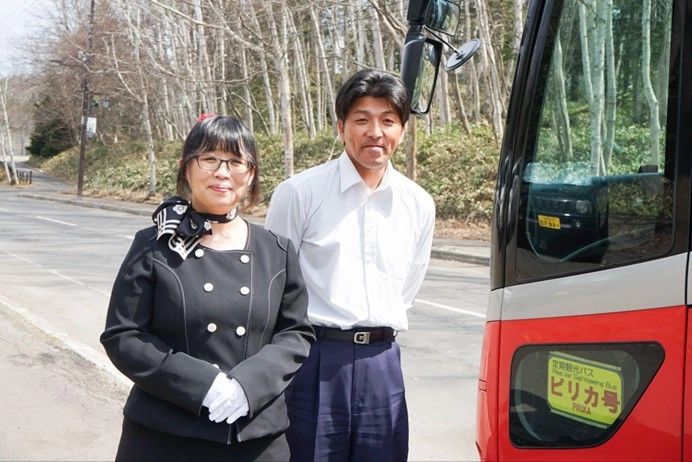
Experience the vast and mystical landscapes of Eastern Hokkaido
on this unforgettable journey. For this article, we had the
pleasure of interviewing Ms. Koyama, a veteran bus guide from
Akan Bus who accompanied us on our tour. Remarkably, Ms. Koyama
has over 20 years of experience as a bus guide. We asked her to
share what makes the Pirika-go tour special, as well as her
recommendations for must-see spots and local gourmet delights in
Eastern Hokkaido.
“The Pirika-go has been a popular sightseeing bus tour for nearly 30 years. While the route has been updated several times to highlight the best destinations of each era, every stop along the way is full of highlights. If I had to choose a favorite, it would definitely be Lake Mashu. Most of the time, the lake is shrouded in fog, which makes it all the more special when the skies are clear—it feels like a stroke of good luck! This is also the spot where our guests are most impressed; many people are amazed by the vibrant blue color of the lake, as if someone has added bath salts to the water. I’m always moved myself by the thought that such colors were created by nature. Lake Akan Onsen is also a favorite among our guests. With a 120-minute stop here, everyone can enjoy the area in their own way—whether it’s having lunch, shopping, or relaxing in a day-use hot spring. People seem to really appreciate the freedom to explore at their own pace.”
The awe-inspiring landscapes shaped by nature are truly unique to Eastern Hokkaido. Beyond the breathtaking scenery, one of the real pleasures of travel here is the chance to enjoy a wide variety of local gourmet specialties. Ms. Koyama has a particular recommendation for lunch:
“For lunch, I highly suggest ‘Ryogoku Sohonten’ in the Lake Akan Onsen area. Their venison rice bowl is truly extraordinary—even local residents are amazed by how delicious it is. There’s absolutely no gaminess, so I hope everyone will try it at least once. The restaurant is even listed in the Michelin Guide’s Bib Gourmand selection.”
Eastern Hokkaido is famous for its wild game cuisine, and you’ll find many restaurants serving venison dishes. While riding the Pirika-go, we asked Ms. Koyama about what she values most in her role:
“Sightseeing bus tours with a guide on board are actually becoming quite rare across Japan. That’s why I place great importance on communication with guests. In Eastern Hokkaido, public transportation options are limited, and many visitors struggle with getting around. So, I make sure I’m familiar with all the transportation options related to our tour, as well as possible plans for after the tour ends. Many travelers rely on the bus guide for advice, so I want to support them as much as possible to ensure they have a comfortable and enjoyable trip.”
“The Pirika-go has been a popular sightseeing bus tour for nearly 30 years. While the route has been updated several times to highlight the best destinations of each era, every stop along the way is full of highlights. If I had to choose a favorite, it would definitely be Lake Mashu. Most of the time, the lake is shrouded in fog, which makes it all the more special when the skies are clear—it feels like a stroke of good luck! This is also the spot where our guests are most impressed; many people are amazed by the vibrant blue color of the lake, as if someone has added bath salts to the water. I’m always moved myself by the thought that such colors were created by nature. Lake Akan Onsen is also a favorite among our guests. With a 120-minute stop here, everyone can enjoy the area in their own way—whether it’s having lunch, shopping, or relaxing in a day-use hot spring. People seem to really appreciate the freedom to explore at their own pace.”
The awe-inspiring landscapes shaped by nature are truly unique to Eastern Hokkaido. Beyond the breathtaking scenery, one of the real pleasures of travel here is the chance to enjoy a wide variety of local gourmet specialties. Ms. Koyama has a particular recommendation for lunch:
“For lunch, I highly suggest ‘Ryogoku Sohonten’ in the Lake Akan Onsen area. Their venison rice bowl is truly extraordinary—even local residents are amazed by how delicious it is. There’s absolutely no gaminess, so I hope everyone will try it at least once. The restaurant is even listed in the Michelin Guide’s Bib Gourmand selection.”
Eastern Hokkaido is famous for its wild game cuisine, and you’ll find many restaurants serving venison dishes. While riding the Pirika-go, we asked Ms. Koyama about what she values most in her role:
“Sightseeing bus tours with a guide on board are actually becoming quite rare across Japan. That’s why I place great importance on communication with guests. In Eastern Hokkaido, public transportation options are limited, and many visitors struggle with getting around. So, I make sure I’m familiar with all the transportation options related to our tour, as well as possible plans for after the tour ends. Many travelers rely on the bus guide for advice, so I want to support them as much as possible to ensure they have a comfortable and enjoyable trip.”
09
How to Reserve
In winter, the limited-time White Pirika-go also operates, so
visiting at different times of the year offers a fresh
experience. Another great option is the "Kushiro Shiretoko-go,"
a sightseeing bus that travels from Kushiro through Lake Mashu,
Mt. Iou, and Abashiri, all the way to the World Heritage Site of
Shiretoko. Like the Pirika-go, it visits many popular
sightseeing spots, allowing you to enjoy sightseeing while you
travel. Reservations for each tour can be made on the official
websites below. Please note that fares may vary depending on
your departure and arrival points, so be sure to check when
booking. Reservations can be made up to the day before your
departure.
Regular Sightseeing Bus Pirika-go
Operating: Mid-April to late November
Regular Sightseeing Bus Kushiro Shiretoko-go (Summer)
Operating: Late July to mid-October
Regular Sightseeing Bus Kushiro Shiretoko-go (Winter)
Operating: Early February to early March
Regular Sightseeing Bus White Pirika-go
Operating: Mid-January to late March
10
Summary
Because Eastern Hokkaido covers such a vast area, getting around
by public transportation can be challenging. If you’re traveling
independently, it’s easy to lose precious time moving between
destinations. But with the sightseeing bus "Pirika-go" introduced
in this article, you can efficiently visit all the must-see scenic
spots. Guided commentary during your journey will deepen your
understanding of Eastern Hokkaido, and you’ll have opportunities
to enjoy local cuisine and cultural experiences as well. This is
the perfect way to experience all the highlights of Eastern
Hokkaido in a single day—ideal even for those who have been to
Hokkaido before but are visiting the eastern region for the first
time. Why not add it to your next travel plans?
Writer Information

Naeka Okumura
Naeka Okumura, born in 1994, hails from Kitami City, Hokkaido. Worked for six years at a financial institution within Hokkaido. Later joined a video production company, Hokuei Northern Films, in Kitami City as a chief manager and writer. Resigned in 2023 and became independent as a copywriter and journalist writer under the name Produce One.
Naeka Okumura, born in 1994, hails from Kitami City, Hokkaido. Worked for six years at a financial institution within Hokkaido. Later joined a video production company, Hokuei Northern Films, in Kitami City as a chief manager and writer. Resigned in 2023 and became independent as a copywriter and journalist writer under the name Produce One.